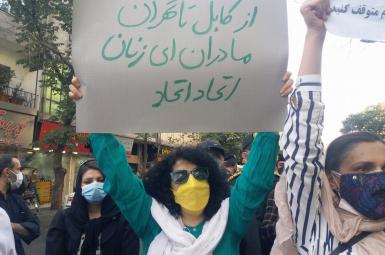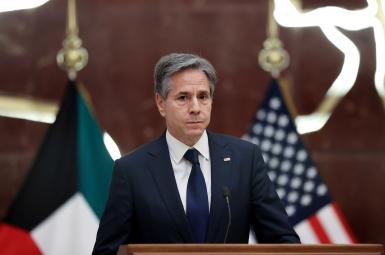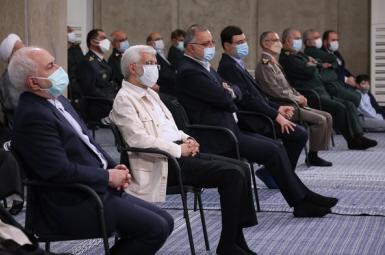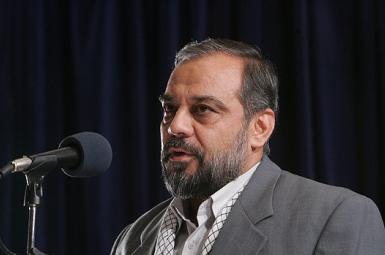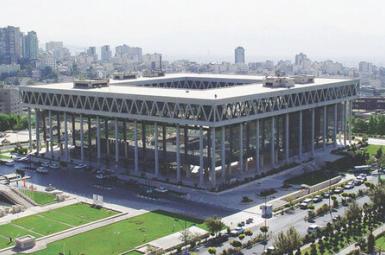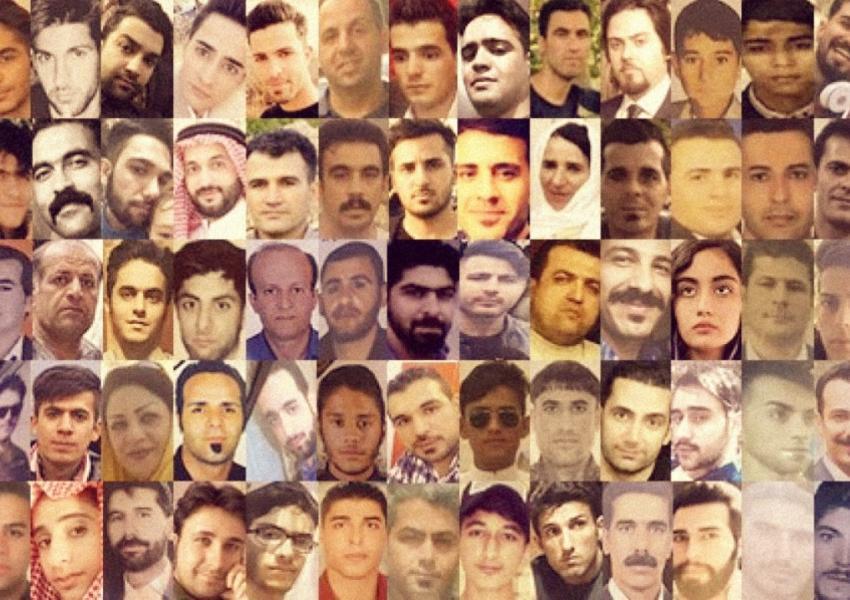
The Network Of Suppression Behind The Bloody Crackdown On November 2019 Protests
Morad Vaisibiame
One year ago, the Islamic Republic’s security forces violently suppressed Iran’s most widespread protest demonstrations ever. The protests took place across 30 of Iran’s 31 provinces and the crackdown was the bloodiest of its kind in four decades. The government never announced the true death toll, but various news sources put it from 400 to 1500.
But who made the decisions? Who issued the orders for bloody suppression and who carried out the orders in various provinces? At least 14 senior officials at national level and as many as 340 local officials ordered and furthered the act of suppression all over Iran.
Ali Khamenei, Supreme Leader of Suppression
The decision to suppress the November 2019 protests was made at the highest level, by Supreme Leader Ali Khamenei. Apart from his role as the regime’s leader, he has also endorsed actions by other officials. According to the Iranian constitution, Khamanei has the final say in approving decisions made by the Supreme Council of National Security (SCNS), which led the suppression. The Leader is also commander-in-chief of the armed forces, including the Revolutionary Guards (IRGC), the Basij militia, the police force, and the special forces. Without his orders, the security forces would have not been able to shoot at demonstrators point blank.
SCNS Chief Hassan Rouhani
Next to Khamenei, Hassan Rouhani is responsible for the massacre. He was the President, head of the government, and head of the SCNS. As such, he played a key part in designing and carrying out the suppression. He is also the chairman of the State Security Council (SSC), which led suppression on the ground. The SSC operates under the direction of SCNS. The Interior Minister and local governors operated under Rouhani’s command.
SSC Chief and Interior Minister Rahmani Fazli
The SSC is in charge of security across Iran. Its members are IRGC commanders and the police force, the prosecutor general and some other security officials. The SSC, which was on the frontline of combating protests, is headed by the Interior Minister. In November 2019, it was Abdolreza Rahmani Fazli who decided how to announce the rise in gasoline prices, which triggered the protests. He also oversaw the day-to-day suppression operations.
Interior Minister Abdolreza Rahmani Fazli
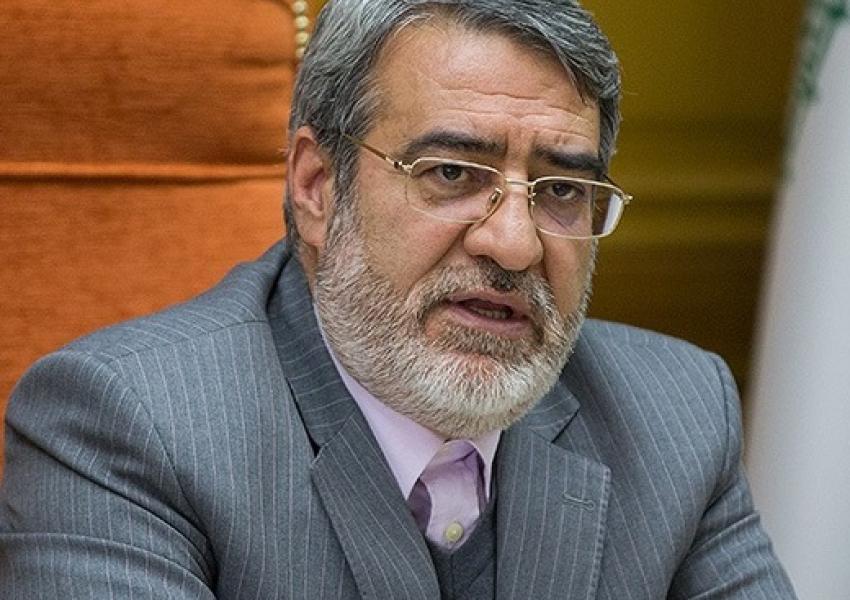
Police Chief Hossein Ashtari, Special Force Commander Hassan Karami
The police is the first unit to confront any protest. Iran’s police force played a key part in suppressing the four major protests in 1999, 2009, 2018, and 2019. Police Chief Hossein Ashtari and Special Force Commander Hassan Karami led the crackdown on protests in November 2019. The Special Force was the unit that made the first responses to the protests, but it is under overall police command.
Intelligence Minister Mahmoud Alavi, IRGC Intelligence Chief Hossein Taeb
The Intelligence Ministry headed by Mahmoud Alavi and the IRGC Intelligence Organization headed by Hossein Taeb were the two intelligence organizations involved in the 2019 crackdown. Although they were rivals during the past decade, the November protests brought them closer. The IRGC Intelligence Organization has been especially empowered by Khamenei during the past decade and is now the country’s most powerful intelligence organization. The Intelligence Ministry has assumed a subordinate role and Alavi has said that he would delegate even more of his ministry’s authorities to the IRGC Intelligence Organization if Khamenei decided.
IRGC Intelligence Chief Hossein Taeb

Judiciary Chief Ebrahim Raeesi, Prosecutor-General Mohammad Jafar Montazeri
Judiciary Chief Ebrahim Raeesi, Prosecutor-General Mohammad Jafar Montazeri, and judges and prison wardens, became involved after the initial crackdown. Although some protesters were arrested during the protests, most arrests were made afterward. The judiciary never announced how many people were arrested, but media reports and some officials have said that more than 8,000 protesters were jailed during and after the protests. Under the supervision of Raeesi and Montazeri, the judiciary condemned many protesters to long jail sentences in collaboration with security and intelligence officials. Many prisoners have said that judges have rubber-stamped decisions made by intelligence officers.
IRGC Commander Hossein Salami and Basij Commander Gholamreza Soleimani
During the past four decades, the IRGC has always been the main pillar of suppressing protests in Iran. Urban riots in Mashad, Qazvin and Eslam Shahr in the 1990s and the four major protests in 1999, 2009, 2018, and 2019 have all been crashed by the Revolutionary Guards. In November 2019, The IRGC and Basij began their crackdown after the police force announced it was no longer able to cope. The two organizations immediately started operations in 30 Iranian provinces.
Other Members of the SCNS
A group of other Iranian officials who are the members of the SCNS have also been involved in planning and executing the crackdown at various levels and in various degrees. Then Majles Speaker Ali Larijani, SCNS Secretary Ali Shamkhani, Vice-President Baqer Nobakht, Foreign Minister Mohammad Javad Zarif and the Chief of Staff of the Iranian armed forces Mohammad Baqeri are some of the officials who played a part in suppressing the November 2019 protests.
The Nationwide Network of Suppression, 340 Local Officials
The provincial network of suppression includes at least 11 political, military, security, intelligence and judiciary officials in each province. The officials have acknowledged that protests took place in 28 provinces but independent reports say some 30 provinces were affected to a larger or smaller degree.
All of these groups of 11 officials were led by local governors and Khamenei's provincial representatives. Local governor-generals represent the administration. These two officials led the crackdown in various provinces by ordering attacks. Deputy governors co-ordinated the operations of the various security forces, while local intelligence chiefs and judiciary offices played a key part alongside vast networks of interrogators, judges, and prison wardens. In operations, the key elements were the local commanders of the IRGC, Basij militia, the police force, and the special forces. Similar networks on a smaller scale led, operated and executed suppression in smaller towns and cities.
Morad Vaisibiame is an editor at Iran International Television and is considered an expert on Iran's IRGC and the Supreme Leader.
